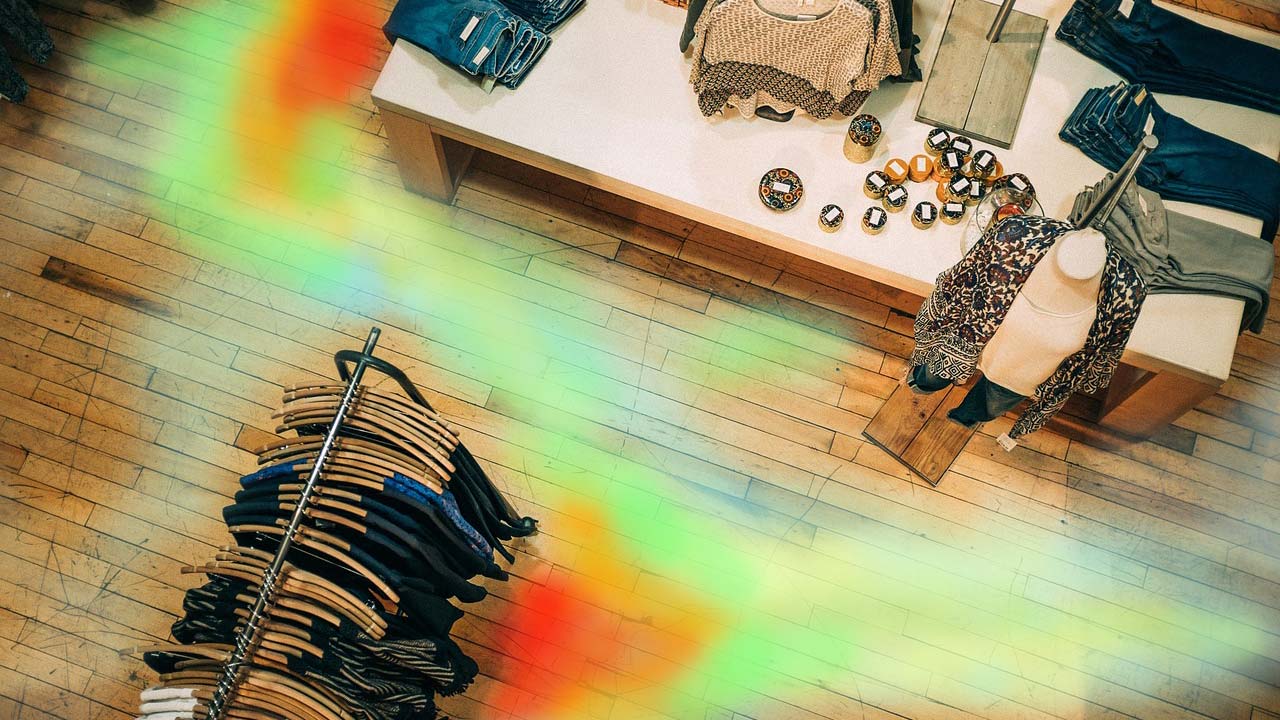E-commerce is though growing exponentially, offline retail still accounts for 90.2% of total retail sales in the United States and a whopping 97% in India. According to IBEF, the revenue of India’s offline retailers is expected to increase by Rs 10,000-12,000 crore (US$ 1.39-2.77 billion) in FY20. What is the reason behind this?
Among many other factors, the one most important factor which has also been vouched by many offline retail giants and local store-chains is becoming tech-savvy. Offline retailers have been making use of smart technologies in their stores to increase their revenue, although the market penetration of these technologies is still not significant. One such important business analytic tool is Heat Map.
What are Heat Maps?
In technical words, a Heat Map is a graphical representation of data where colours represent any individual value contained in the matrix. But speaking generally, in-store Heat Mapping is a technology where a report is created based on the level of customer engagement and foot traffic and is shown using different colours. The most engaged areas in the store is represented in bright colours like red, orange, yellow, and the least engaged areas is shown in colours like purple, green, etc..
How are retailers boosting their revenue using Heat Maps?
- Heat Map Analytics gives essential insights on how customers engage with the products, how much time they spend looking at a product, how many options they choose from, which product they keep going back to but don’t buy, products they buy often, etc..This data helps retailers understand the customer’s needs and wants.
- Data from Heat Maps reveal hot spots, dead spots and bottlenecks of the store. Retailers use this information and with careful analysis and few changes, revive low performing areas and promote cross-selling. It also helps in optimising the store’s layout and manipulating the traffic in a certain direction.
- Without heat mapping, data on only 15-20% of customers’ journeys can be collected through traditional methods, i.e., through shopping history. The data obtained from in-store retail analytics shows the path taken by individual customers, thus, helping
Retailers take a peek inside the customer’s mind. This helps in better placement of different products, removing old, out of trend stuff, quickly refilling out-of-stock items, etc.. - Heat Maps also helps Retailers understand the behaviour of customers outside the store. They provide data about the volume of foot traffic outside the store, from which direction are the customers coming, are they alone or with other people, etc., thus, helping Retailers in better placement of banners, campaigns, promotional offers, etc.. It also helps them understand if outdoor marketing campaigns are working or not.
- Retailers are able to place their staff better and increase or decrease the number of staffs by understanding the needs of customers through the data obtained from Heat Maps, thus, helping them in cost-cutting and increasing employee efficiency
Indian E-commerce has been increasing its acquisition costs rapidly in recent years. They are spending more on smart analytical tools which is helping them understand their customers and grow exponentially. Offline Retailers have understood this tactic and are following suit to stay relevant. Heat Mapping, a cutting edge technology, revolutionized for offline retailers now, is changing the game by bringing them up to date to the technical world.
At Aidetic, we specialize in providing artificial intelligence enabled video analytics solutions. We build customized software for retail analytics, production line management, automated surveillance, and surveying and land mapping. Moreover, we also handcraft unique solutions for our clients’ specific use cases. Feel free to write to us at info@aidetic.in to learn if we can help you with your specific use cases.





Great content 🙂